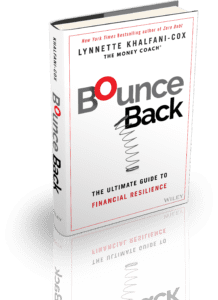For most families, full ride scholarships are the ultimate financial dream—covering tuition, fees, room, and board for four years of college. With college costs soaring into the tens of thousands annually, it’s no wonder these scholarships are so coveted. But here’s the reality: fewer than 1% of college students receive a full ride.
Still, they do exist—and they can be life-changing. Unfortunately, many students still turn them down, often for reasons that don’t hold up when weighed against long-term financial impact.
Why Turning Down a Full Ride Can Be a Costly Mistake
When I graduated from the University of California, Irvine in 1991, tuition and living expenses cost about $6,000 a year. That same education today can easily run over $30,000 for in-state students and over $50,000 for out-of-state students.
After undergrad, I was accepted to both Boston University (BU) and the University of Southern California (USC) for graduate school. BU made it clear they wanted me—they offered a full ride, valued at more than $25,000 per year. USC accepted me later and offered little in the way of financial aid, mostly loans.
So what did I do?
I followed my heart instead of my wallet and chose USC, largely to stay close to a boyfriend. In hindsight, that decision cost me dearly—literally. I walked away from a fully funded education, took on student loans, and years later, the relationship that anchored that choice ended in divorce.
The Strategy Behind Financial Aid Offers
What I didn’t realize at the time was that colleges use financial aid leveraging to attract certain types of students. BU saw me as a great fit and made a strong financial offer. USC offered admission but little support, effectively telling me: “You’re welcome here—if you can pay.”
This practice, sometimes known as “admit-deny,” is used to manage enrollment and finances, often leaving middle- and low-income students with a significant financial gap to cover through loans or out-of-pocket.
A Personal Example With Long-Term Lessons
I don’t regret the education I received at USC. It was academically fulfilling and opened doors. But financially, it was a decision made without full awareness of the consequences.
If one of my children were ever offered a full ride and wanted to turn it down for emotional or non-academic reasons, I’d urge them to take a hard look at the long-term impact. A full ride today could be worth $60,000–$250,000. That’s not a decision to take lightly.
The Role of the Common App in Today’s Admissions Landscape
One reason full rides are so rare and competition is so fierce is due to the Common Application. With the click of a button, students can now apply to up to 20 schools at once. More applications mean stiffer competition—not just for admission, but for generous aid packages.
The New York Times reports that Common App submissions may soon top 10 million annually, with more than 1,000 colleges participating. That means students need to be smarter than ever about how they apply and what offers they accept.
Smart Tips for Navigating Full Ride Offers
-
Evaluate Net Cost, Not Just Prestige: A fancy name means nothing if you’re saddled with six figures of debt.
-
Read the Fine Print: Some scholarships require maintaining a certain GPA or fulfilling work-study requirements.
-
Consider Long-Term Goals: Will turning down a full ride delay graduation or limit your future options?
-
Involve Trusted Advisors: Parents, mentors, or financial aid counselors can help you make an informed decision.
Final Thoughts
A full ride scholarship is one of the most generous gifts a student can receive. If you’re lucky enough to be offered one, think carefully before declining. Personal priorities matter, but the cost of ignoring financial realities can follow you for years.
Whether you’re navigating your own college journey or helping your child choose the right path, make financial fit just as important as academic and social considerations. Because while love may be priceless, student loans definitely are not.
FAQs: Full Ride Scholarships: Rare but Possible
How rare are full ride scholarships?
Less than 1% of college students receive a full ride that covers all costs—tuition, fees, room, and board.
Should I turn down a full ride for a more prestigious school?
Not usually. Prestige doesn’t always equal quality or outcomes. Weigh the costs and your career goals before deciding.
What is “admit-deny” in college admissions?
“Admit-deny” is when a college offers admission but provides little or no financial aid, often making it financially impossible to attend.
How can I find full ride scholarships?
Look at merit-based aid from universities, national competitions (like National Merit or Coca-Cola Scholars), and private organizations.










